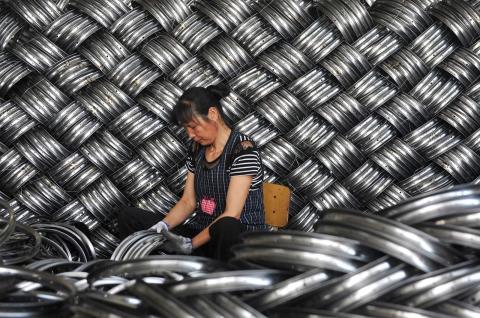In his report delivered at the 19th Party Congress, Xi Jinping declared that it was the Chinese Communist Party’s aspiration and mission to seek happiness for the Chinese people. Hu Angang, one of China’s leading economists, predicts that by 2030 China will be one of the happiest countries in the world – an ambitious target considering the 2018 World Happiness Report ranks China only 86th out of 156 countries, more or less in the same middling position it has occupied since the report series began 2012.
Happiness is certainly on China’s agenda. Much is written and said about xingfu by the Chinese Government, authors of self-help books, journalists, TV chat-show hosts, pop psychologists, and China’s netizens.
In fact, we can observe a veritable happiness campaign in China today. Public advertising employs artfully produced, visually appealing images of the highest quality to associate happiness with traditional Chinese values, the Chinese family and the Chinese nation, and, more vaguely, with the “China Dream” itself.
The campaign’s core message is: embrace the values, desire the party’s leadership, dream the “China Dream” and happiness will follow.
This is not the first time the party has taken an interest in happiness. In China of the early 1950s, party ideologues discussed the meaning of happiness with the young readership of the China Youth Journal. The debate revolved around tension between individual and collective happiness during the phase of building a “happy and prosperous socialist society”, as was the slogan then.
From the many readers’ letters generated by the debate, it is evident that for young people of the 1950s, happiness was to be found in family, friends and lovers, a good salary, consumer choices, and the freedom to choose their own path in life – rather different aspirations to those the party had in mind as part of the project of building socialism. Party ideologues and propagandists exhorted young people to adopt the “correct spirit” by putting collective happiness above individual happiness, and to embrace the individual sacrifices required to achieve this higher aim.
Spirit, or jingshen, is a key concept in the modern Chinese approach to the psyche. It emphasises the conscious mind, the importance of human agency, and the individual’s ability to learn and internalise the correct attitude. Jingshen is built on the assumption that all individuals can learn and change themselves as long as they are informed of the correct way to view their circumstances.
In the 1950s, the emphasis was on building a happy society, not on being happy; rejoicing in sacrifice for the greater good was the spirit required while working at overthrowing the existing social order and redistributing the means of production. In China in the era of Mao, therefore, achieving social transformation was the main purpose of propaganda.
In the current era, social stability and regime maintenance have become the main goals. Spiritual messages, rather than revolutionary calls for struggle, now dominate the media.
The Chinese Communist Party’s regime is intent on promoting continuity and stability, and deploys its sophisticated propaganda machine for this purpose. Promoting happiness is key to this because happiness facilitates acceptance; it is conservative and seeks consensus on shared values.
In the past decade, China’s general public have been swaddled in feel-good messages about the Chinese nation and the “China Dream”; the dry slogans and angry exhortations of old have been replaced by aesthetically pleasing, high-quality imagery that evokes positive feelings and commonly shared values, such as honesty, courtesy, and helping others.
China’s propaganda system is built on theories of social psychology and mass communication as put forward by the likes of Walter Lippmann, Harold Lasswell, and Noam Chomsky. In the recent campaign to promote happiness we can detect the influence of another American: Martin Seligman, seminal figure of the positive psychology movement.
Positive psychology focuses on the beautiful and the positive in life, and is built on the idea that an individual’s happiness largely depends on mental attitude, and that this attitude can be learnt. As such, it is perfectly compatible with the Chinese concept of jingshen.
Seligman is a very influential figure in international happiness research and education, and his work permeates CCP party talk, cadre training manuals, and citizen handbooks on happiness. Crucially, positive psychology’s influence can be detected in the state propaganda itself, which now focuses on what has already been achieved and what is within reach, as well as on the promotion of positive values and attitudes about being Chinese.
But rather than seeing this focus on happiness as a sign of Westernisation or the pervasive influence of neo-liberalism, China’s emphasis on happiness needs to be understood as a continued effort to instil the correct spirit in the Chinese population.
In the era of the “China Dream”, happiness is the required spirit, and positive psychology holds the key to unlocking everybody’s happiness potential. Not everybody is convinced, of course. Expressions such as wei xingfu (fake happiness) and bei xingfu (a forced-upon state of happiness that must be endured) circulate widely in popular parlance, indicating that the Chinese people are well aware and quite wary of the happiness imperative.

